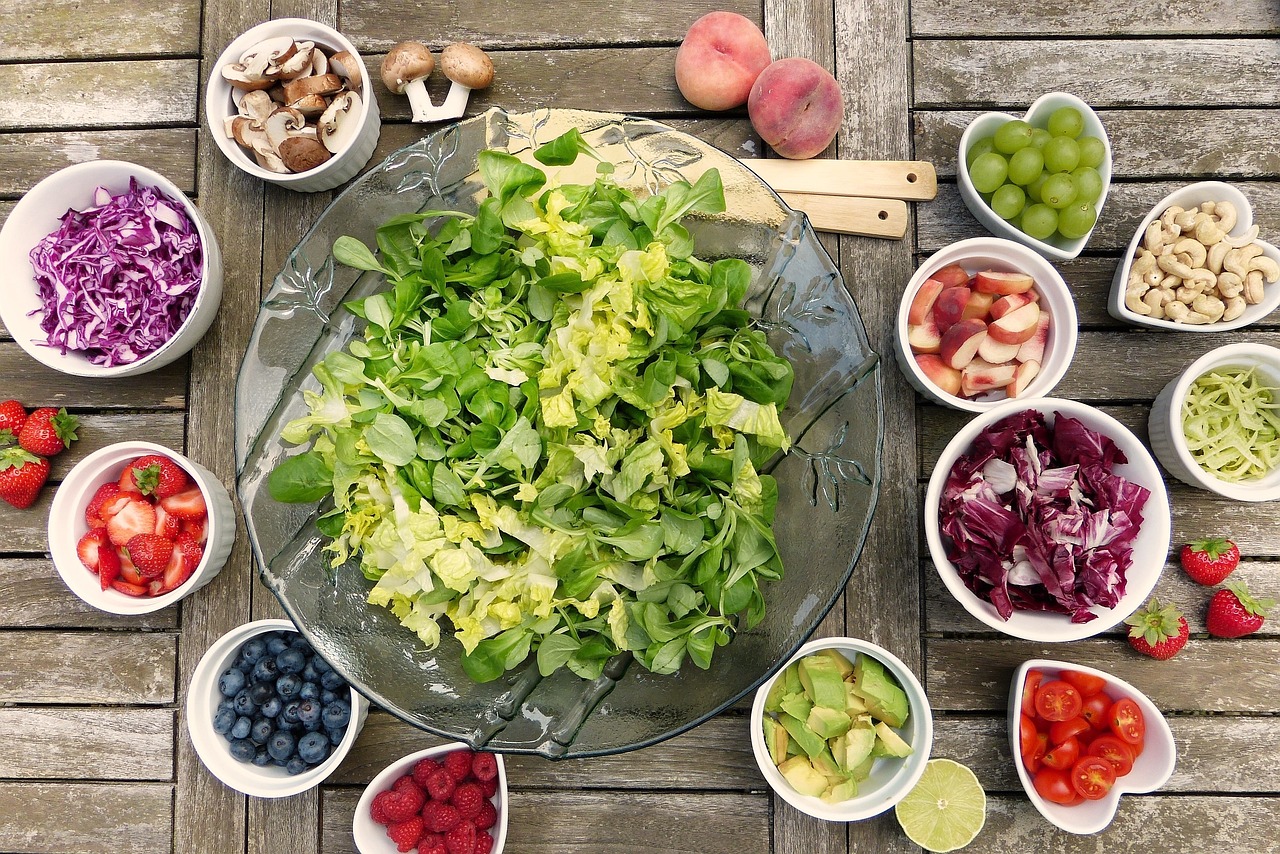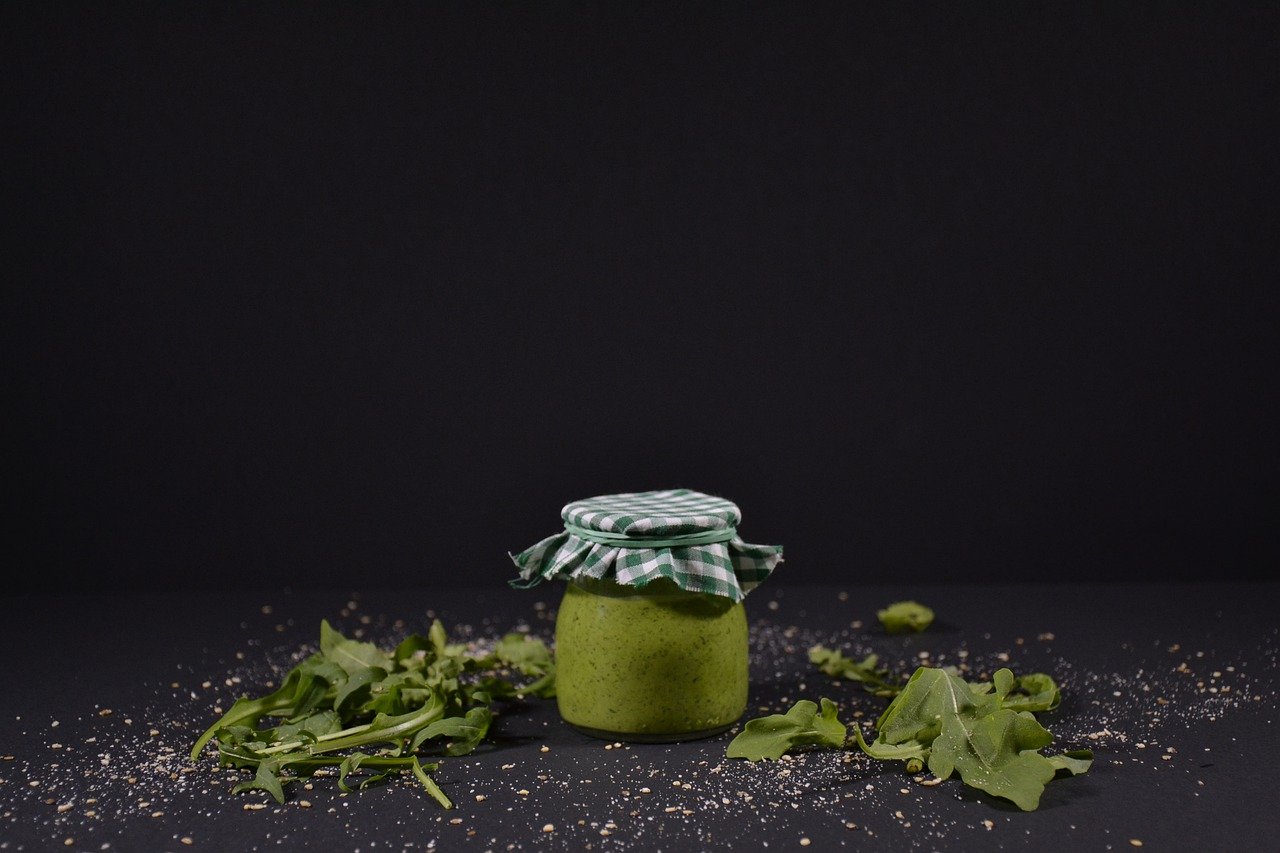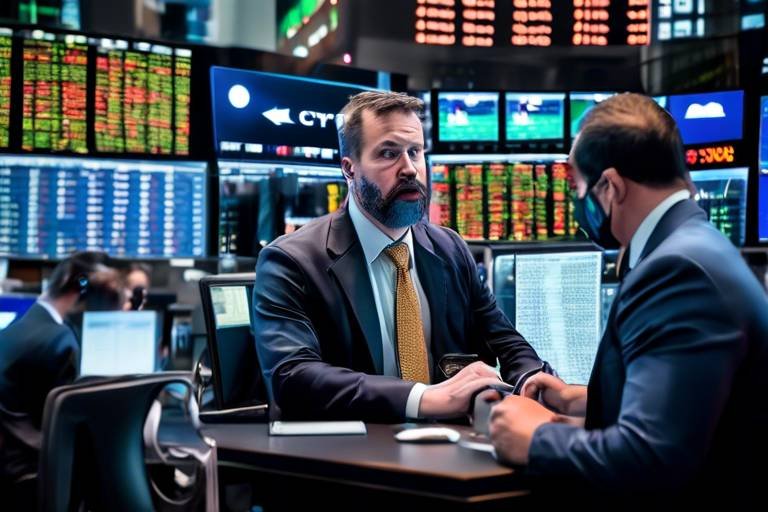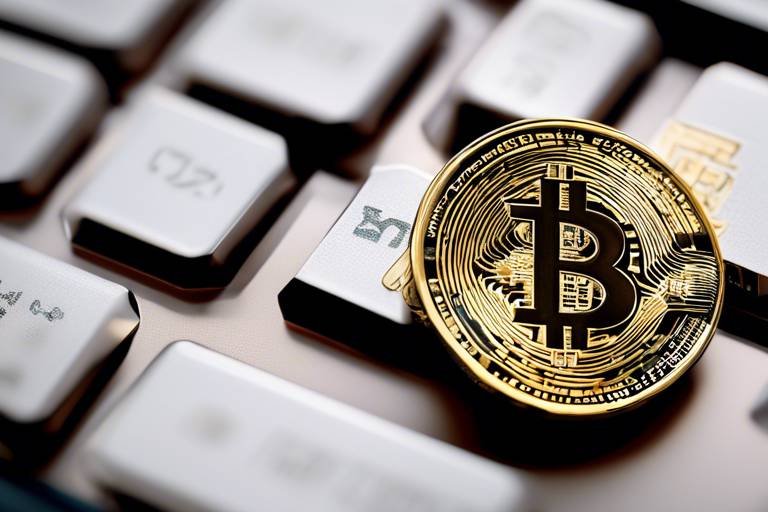The Role of Blockchain in Food Safety and Traceability
In today's fast-paced world, where food travels thousands of miles before reaching our plates, ensuring food safety and traceability has never been more critical. Imagine biting into a delicious apple, only to discover it was part of a contaminated batch. The thought alone is enough to make anyone uneasy! This is where blockchain technology swoops in like a superhero, transforming the way we think about the food supply chain. By providing an immutable and transparent ledger, blockchain enhances accountability and trust among all stakeholders—from farmers to consumers. In this article, we will explore how blockchain is revolutionizing food safety and traceability, addressing the challenges faced by the industry while uncovering the myriad opportunities that lie ahead.
At its core, blockchain is a decentralized digital ledger that records transactions across multiple computers in a way that the registered transactions cannot be altered retroactively. This technology ensures security and transparency, making it an ideal candidate for applications in various sectors, including the food industry. Think of blockchain as a digital chain of blocks, where each block contains information about a specific transaction, such as the origin of a product, processing details, and distribution paths. This decentralized nature means that no single entity has control over the entire chain, which reduces the risk of fraud and enhances trust among all parties involved.
Food safety is not just a buzzword; it’s a fundamental aspect of public health. Every year, millions of people suffer from foodborne illnesses, which can lead to severe health complications and even death. Maintaining high safety standards throughout the food supply chain is essential for preventing these issues. By implementing rigorous safety protocols and utilizing technology like blockchain, stakeholders can ensure that food products are safe for consumption. Moreover, consumers today are more concerned about what goes into their bodies than ever before. They want to know where their food comes from, how it was processed, and if it meets safety standards. This demand for transparency is pushing the food industry to adopt innovative solutions, and blockchain is leading the charge.
Despite the advancements in technology, the food industry still faces significant challenges when it comes to traceability. Some of the most common issues include:
- Lack of Transparency: Many supply chains are convoluted, making it difficult for consumers and stakeholders to trace the origins of food products.
- Inefficiencies in Tracking: Traditional tracking methods can be slow and prone to errors, resulting in delays and potential safety risks.
- Communication Gaps: Different stakeholders often use incompatible systems, leading to miscommunication and fragmented information.
These challenges not only hinder traceability but also contribute to a lack of consumer confidence in the safety of food products. As consumers become more aware of these issues, they demand solutions that ensure their food is safe, fresh, and ethically sourced.
Blockchain technology can significantly improve traceability by creating an immutable record of every transaction that occurs within the food supply chain. This means that every time a product changes hands—from farm to processing facility to retailer—an entry is made in the blockchain. This record is accessible to all authorized parties, allowing them to track food products in real-time. Imagine being able to scan a QR code on your food packaging and instantly see its entire journey from farm to table. This level of transparency not only increases accountability but also builds consumer trust. When people know they can trace their food back to its source, they are more likely to feel confident about what they are eating.
Several companies have already begun harnessing the power of blockchain to enhance food safety. For example, Walmart has implemented a blockchain system to track the origin of its leafy greens. By doing so, the company can quickly identify and isolate contaminated products during a food safety crisis, reducing the risk of widespread illness. Another notable example is IBM Food Trust, a blockchain-based platform that connects various stakeholders in the food supply chain, promoting transparency and collaboration. These case studies highlight the transformative potential of blockchain in ensuring food safety and traceability.
As blockchain technology gains traction in the food industry, regulatory bodies are beginning to take notice. They recognize the potential of blockchain to enhance food safety and traceability, which could lead to the development of new guidelines and standards. For instance, the Food and Drug Administration (FDA) in the United States has expressed interest in exploring how blockchain can improve food safety measures. As regulations evolve, stakeholders must stay informed and be prepared to adapt to new requirements that may govern the use of blockchain technology in food safety.
The future of blockchain in food safety is bright, with several emerging trends that could shape the landscape of food traceability. These include:
- Integration with IoT: The Internet of Things (IoT) can work alongside blockchain to provide real-time data on food conditions, such as temperature and humidity during transportation.
- Increased Consumer Engagement: As consumers demand more information, companies may use blockchain to provide detailed product histories, enhancing customer loyalty.
- Collaboration Across Sectors: Different industries may collaborate to create standardized blockchain solutions that improve traceability across the entire food supply chain.
While challenges remain, the potential for blockchain to revolutionize food safety and traceability is undeniable.
In conclusion, blockchain technology offers a promising solution to the challenges of food safety and traceability. By enhancing transparency and accountability, it can help build consumer trust and ensure a safer food supply chain. Stakeholders in the food industry should consider adopting blockchain technology to stay ahead of the curve and meet the growing demand for food safety. As we look to the future, embracing innovation and collaboration will be key to overcoming obstacles and unlocking the full potential of blockchain in food safety.
Q: What is blockchain technology?
A: Blockchain is a decentralized digital ledger that records transactions in a secure and transparent manner, making it difficult to alter past records.
Q: How does blockchain improve food safety?
A: By providing an immutable record of transactions, blockchain allows stakeholders to track food products from farm to table, increasing accountability and consumer trust.
Q: What are the challenges in food traceability?
A: Common challenges include lack of transparency, inefficiencies in tracking, and communication gaps among stakeholders.
Q: Are there any real-world examples of blockchain in food safety?
A: Yes, companies like Walmart and IBM have successfully implemented blockchain solutions to enhance food safety and traceability.
Q: What does the future hold for blockchain in food safety?
A: Emerging trends include integration with IoT, increased consumer engagement, and collaboration across sectors to create standardized solutions.

Understanding Blockchain Technology
Blockchain technology is often described as a digital ledger that records transactions across many computers in such a way that the registered transactions cannot be altered retroactively. This feature creates a secure and transparent environment for data sharing, making it highly beneficial for various applications, especially in the food industry. Imagine a massive digital notebook that everyone can see but no one can erase or change—this is the essence of blockchain.
At its core, blockchain operates on a few fundamental principles:
- Decentralization: Unlike traditional databases that are controlled by a central authority, blockchain is decentralized. This means that all participants in the network have access to the same information, reducing the risk of fraud and manipulation.
- Transparency: Every transaction on a blockchain is visible to all participants, which fosters trust among stakeholders. Whether it’s a farmer, distributor, or retailer, everyone can see the history of a product.
- Immutability: Once a transaction is recorded on the blockchain, it cannot be changed or deleted. This ensures that all records are permanent and trustworthy, making it easier to trace the origin of food products.
The way blockchain functions is through a series of blocks that contain transaction data. Each block is linked to the previous one, forming a chain—hence the name "blockchain." When a new transaction occurs, it is grouped with others into a block and then added to the chain after being verified by network participants through a consensus mechanism. This process not only ensures the accuracy of the data but also enhances security, as altering any block would require changing all subsequent blocks, which is nearly impossible.
In the context of the food industry, blockchain technology offers a revolutionary approach to tracking and verifying food products. From the moment a product is harvested to the point it reaches the consumer's plate, every step can be documented and verified on the blockchain. This level of traceability is crucial for addressing issues such as food fraud, contamination, and recalls. For instance, if a batch of lettuce is found to be contaminated, blockchain allows for swift identification of the source and the affected products, ensuring that only the necessary items are recalled, thereby minimizing waste and protecting public health.
Moreover, the integration of blockchain with other technologies, such as the Internet of Things (IoT), can further enhance food safety. IoT devices can continuously monitor conditions like temperature and humidity during transportation, and this data can be recorded in real-time on the blockchain. This creates a comprehensive and transparent record that can be accessed by all stakeholders, ensuring that food products are stored and transported under optimal conditions.
In summary, understanding blockchain technology is essential for appreciating its potential impact on food safety and traceability. Its decentralized nature, combined with transparency and immutability, offers a robust solution to many challenges faced in the food supply chain. As we continue to explore the applications of blockchain, it becomes increasingly clear that this technology is not just a trend but a fundamental shift in how we approach food safety and accountability.

Importance of Food Safety
Food safety is not just a buzzword; it's a fundamental aspect of public health that impacts everyone, from farmers to consumers. Think about it: when you bite into a juicy apple or savor a delicious steak, you expect it to be safe, right? Unfortunately, the reality is that foodborne illnesses can strike when we least expect it, leading to serious health complications or even fatalities. According to the World Health Organization, an estimated 600 million people fall ill after eating contaminated food each year. That's why maintaining safety standards throughout the food supply chain is crucial.
Ensuring food safety involves a series of practices that help prevent contamination and ensure that the food we consume is of high quality. This includes everything from proper handling and storage of food products to cooking them at the right temperatures. The importance of food safety can be summarized in several key points:
- Public Health Protection: The primary goal of food safety is to protect consumers from foodborne illnesses, which can be caused by bacteria, viruses, and parasites. By adhering to safety standards, we can significantly reduce the risk of outbreaks.
- Quality Assurance: Food safety regulations help ensure that the food reaching consumers is fresh, nutritious, and free from harmful substances. This not only enhances consumer satisfaction but also builds trust in food brands.
- Economic Impact: Foodborne illnesses can lead to significant economic losses for businesses due to recalls, legal actions, and lost consumer trust. Investing in food safety can prevent these costly repercussions.
Furthermore, the food supply chain is incredibly complex, involving multiple stakeholders, including farmers, processors, distributors, and retailers. Each link in this chain plays a vital role in maintaining food safety. For instance, farmers must follow best practices in pesticide use and animal husbandry, while processors need to ensure that their facilities meet hygiene standards. This interconnectedness means that a lapse in safety at any point can have a ripple effect, potentially endangering public health.
As consumers become more aware of food safety issues, they are increasingly demanding transparency and accountability from food producers. This is where technologies like blockchain come into play. By providing a secure and transparent way to track food products from farm to table, blockchain can enhance food safety initiatives, ensuring that every stakeholder is held accountable for the products they deliver.
In summary, the importance of food safety cannot be overstated. It protects public health, ensures quality, and has significant economic implications. As we continue to navigate the complexities of the food supply chain, it is essential for all stakeholders to prioritize food safety and embrace innovative technologies that can help us achieve this goal.
- What are the main causes of foodborne illnesses? Foodborne illnesses are primarily caused by bacteria, viruses, and parasites that contaminate food. Common sources include undercooked meat, unwashed fruits and vegetables, and contaminated water.
- How can consumers ensure the food they buy is safe? Consumers can ensure food safety by checking expiration dates, purchasing from reputable sources, and following proper food handling and cooking practices at home.
- What role does technology play in improving food safety? Technology, such as blockchain, enhances food safety by providing transparency and traceability in the food supply chain, allowing for quick identification of contamination sources.

Challenges in Food Traceability
When it comes to food traceability, the journey from farm to table can often feel like a maze. Imagine trying to navigate a complex web of suppliers, distributors, and retailers, all while ensuring that every single ingredient is safe and compliant. This is where the challenges begin. One of the most significant hurdles in food traceability is the lack of transparency across the supply chain. With various players involved, it can be difficult to pinpoint where a food product originated and how it was handled along the way. This opacity can lead to serious issues, especially when foodborne illnesses occur, as it complicates the process of identifying the source of contamination.
Another challenge is the inefficiency in tracking food products. Traditional systems often rely on paper-based records or outdated technology, which can be prone to human error. This inefficiency not only slows down the traceability process but also makes it harder to maintain accurate records. For instance, if a batch of contaminated lettuce is discovered, tracing back through a convoluted paper trail can take days, if not weeks. In contrast, a streamlined digital system could provide instant access to the necessary data.
Moreover, the need for better communication among stakeholders in the food industry cannot be overstated. Often, suppliers, manufacturers, and retailers operate in silos, leading to a lack of shared information. This disconnection can create gaps in traceability, making it challenging to ensure that safety standards are consistently met. For example, if a supplier fails to communicate a change in sourcing practices, it could result in a product that doesn’t meet safety standards reaching consumers.
Additionally, there are regulatory challenges that complicate food traceability. Different countries and regions have varying regulations regarding food safety, which can create confusion for international suppliers and distributors. Keeping up with these regulations and ensuring compliance can be a daunting task, especially for smaller businesses that may lack the resources to navigate complex legal landscapes.
In summary, the challenges in food traceability are multifaceted and require a concerted effort from all stakeholders involved. Addressing these issues is essential for ensuring food safety and maintaining consumer trust. By recognizing these challenges, the industry can begin to explore innovative solutions that enhance transparency and efficiency.
- What are the primary challenges in food traceability? The main challenges include lack of transparency, inefficiencies in tracking, poor communication among stakeholders, and regulatory complexities.
- Why is transparency important in food traceability? Transparency helps identify the source of food products and ensures that safety standards are met, which is crucial for preventing foodborne illnesses.
- How can technology improve food traceability? Technologies like blockchain can provide real-time tracking and immutable records, enhancing transparency and accountability in the food supply chain.

How Blockchain Enhances Traceability
Imagine you're at your favorite restaurant, and you order a delicious salad. Have you ever wondered where the lettuce, tomatoes, and chicken came from? This is where blockchain technology steps in to transform the way we think about food traceability. By creating a secure and transparent ledger for every transaction in the food supply chain, blockchain enables consumers to trace the origin of their food with just a few clicks.
At its core, blockchain is a decentralized system that records transactions across multiple computers. This means that no single entity has control over the entire database, making it incredibly difficult to alter or falsify records. When applied to food traceability, this technology allows all stakeholders—from farmers to retailers to consumers—to access real-time data about the journey of food products. For instance, if a batch of lettuce is found to be contaminated, blockchain can help quickly identify the source and prevent further distribution, ultimately protecting public health.
One of the most significant advantages of blockchain in enhancing traceability is its immutability. Once data is entered into the blockchain, it cannot be changed or deleted, which means that every transaction remains transparent and verifiable. This feature fosters a culture of accountability among producers and suppliers. For example, if a farmer claims that their produce is organic, consumers can verify this claim by checking the blockchain records that detail the farming practices used, the certifications obtained, and even the date of harvest.
Moreover, blockchain technology can streamline the communication process among various stakeholders in the food supply chain. Traditionally, tracking food products involves multiple parties, each maintaining their own records, which can lead to discrepancies and confusion. With blockchain, all parties can access a single source of truth, significantly reducing the chances of miscommunication. This can be particularly beneficial during food recalls, where speed is crucial. By having a clear and accessible record of where a product has been, companies can act swiftly to remove affected items from shelves.
To illustrate this point further, consider the following table that summarizes the key benefits of blockchain in food traceability:
| Benefit | Description |
|---|---|
| Transparency | All stakeholders can view the entire history of a food product, from farm to table. |
| Accountability | Immutable records ensure that producers are held responsible for their products. |
| Speed | Quick access to information allows for rapid response during food recalls. |
| Consumer Trust | Knowing the origin and journey of food enhances consumer confidence in food safety. |
In conclusion, blockchain technology is revolutionizing food traceability by providing a robust framework for transparency, accountability, and efficiency. As consumers become more conscious of their food choices, the demand for reliable traceability will only grow. By adopting blockchain solutions, stakeholders can not only enhance their operational processes but also contribute to a safer and more trustworthy food supply chain.
- What is blockchain technology? Blockchain is a decentralized digital ledger that records transactions across multiple computers, ensuring that the data is secure and transparent.
- How does blockchain improve food traceability? It provides an immutable record of transactions, allowing stakeholders to verify the origin and journey of food products easily.
- Can consumers access blockchain data? Yes, consumers can access information about food products through blockchain, enhancing transparency and trust.
- What are the benefits of using blockchain in the food supply chain? Benefits include increased transparency, accountability, speed in recalls, and enhanced consumer trust.

Case Studies of Blockchain in Food Safety
In recent years, several companies have started to embrace blockchain technology to enhance food safety and traceability, leading to remarkable improvements in the food supply chain. One of the standout examples is the partnership between Walmart and IBM. They launched the Food Trust blockchain initiative, which allows Walmart to trace the origin of food products in seconds instead of days. Imagine having the ability to trace a mango back to its farm within moments! This initiative has significantly improved the ability to respond to food safety issues, such as contamination outbreaks, by quickly identifying the source and preventing further distribution of affected products.
Another compelling case study is that of Tyson Foods, a major player in the protein industry. Tyson Foods has implemented blockchain technology to track its chicken supply chain. By utilizing blockchain, they can provide consumers with detailed information about where their chicken comes from, including the farm, processing plant, and transportation details. This level of transparency not only enhances consumer trust but also ensures accountability throughout the supply chain. The ability to provide this information at the point of sale is akin to having a personal guide who narrates the journey of your food from farm to fork.
Additionally, the seafood industry has seen significant advancements through blockchain. Provenance, a startup focused on transparency in food supply chains, has worked with various seafood suppliers to track fish from ocean to plate. Using blockchain, Provenance creates a digital trail that verifies the authenticity and sustainability of seafood products. This is crucial in combating issues like illegal fishing and ensuring that consumers are not misled about the origins of their seafood. The result is a more sustainable industry and more informed consumers.
Furthermore, a notable example from the dairy sector is Dairy Farmers of America, which has begun leveraging blockchain to enhance the traceability of its milk products. By implementing blockchain, they can provide consumers with real-time information about the milk's journey, including the farms it came from and the processing it underwent. This not only boosts consumer confidence but also allows for quicker responses to any food safety issues, minimizing the impact on public health.
To illustrate the impact of these implementations, let’s take a quick look at a
| Company | Industry | Key Benefits |
|---|---|---|
| Walmart & IBM | Retail | Rapid traceability, quick response to contamination |
| Tyson Foods | Meat | Enhanced transparency, increased consumer trust |
| Provenance | Seafood | Verification of sustainability, combatting illegal fishing |
| Dairy Farmers of America | Dairy | Real-time traceability, improved public health response |
These case studies exemplify the transformative potential of blockchain technology in ensuring food safety and traceability. They not only enhance transparency but also foster a culture of accountability among stakeholders. As more companies recognize the benefits of adopting blockchain, we can expect a significant shift toward safer and more reliable food systems.
Q1: How does blockchain improve food traceability?
A1: Blockchain provides an immutable ledger that records every transaction in the food supply chain, allowing stakeholders to trace products back to their origin quickly and accurately.
Q2: Can blockchain prevent food fraud?
A2: Yes, blockchain enhances transparency and accountability, making it more difficult for fraudulent practices to occur, such as mislabeling or selling contaminated products.
Q3: What are the challenges of implementing blockchain in the food industry?
A3: Challenges include the need for industry-wide collaboration, integration with existing systems, and ensuring all stakeholders are educated about the technology.
Q4: Is blockchain technology expensive to implement?
A4: While there are initial costs associated with implementing blockchain, the long-term benefits in terms of efficiency, safety, and consumer trust can outweigh these costs.

Regulatory Perspectives on Blockchain
As blockchain technology continues to gain traction across various industries, its integration into the food safety sector raises important regulatory questions. Regulatory bodies are tasked with ensuring that food safety standards are met while also fostering innovation. The challenge lies in crafting regulations that can accommodate the rapid evolution of blockchain technology without stifling its potential benefits. So, how are regulators responding to this new frontier?
One of the primary concerns for regulators is the need for standardization. With multiple blockchain platforms available, each with its own protocols and functionalities, creating a cohesive regulatory framework becomes a daunting task. Regulators must collaborate with industry stakeholders to develop guidelines that ensure interoperability among different blockchain systems. This collaboration is crucial for establishing a reliable and efficient food traceability system that can be universally adopted.
Additionally, data privacy is another significant aspect that regulators must consider. While blockchain provides transparency, it also raises questions about how sensitive information is handled. For instance, consumer data and proprietary business information must be protected to maintain trust in the system. Regulatory bodies are exploring the balance between transparency and privacy, ensuring that while consumers can verify food sources, their personal information remains secure.
Moreover, the traceability aspect of blockchain technology aligns well with existing food safety regulations. Many countries already have stringent laws in place that require traceability from farm to fork. Blockchain can enhance compliance with these regulations by providing an immutable, time-stamped record of each transaction. This capability not only simplifies audits but also allows for quicker responses to food safety incidents, potentially saving lives. For example, if a batch of contaminated food is identified, blockchain can help trace its origin and distribution path, enabling swift action to prevent further spread.
Furthermore, as blockchain technology evolves, we can expect regulatory bodies to issue guidelines and standards specifically tailored for its application in food safety. These may include:
- Standards for data entry to ensure accuracy and reliability.
- Protocols for data sharing among stakeholders while maintaining privacy.
- Guidelines for the use of smart contracts in automating compliance processes.
In conclusion, the regulatory landscape surrounding blockchain in food safety is still developing. As stakeholders from various sectors engage in discussions with regulators, we can anticipate a more structured approach to integrating blockchain technology into food safety practices. The goal is to create a framework that not only enhances traceability and accountability but also fosters innovation and protects consumer interests.
As we move forward, it is imperative for all stakeholders—producers, retailers, consumers, and regulators—to stay informed and actively participate in shaping the regulations that will govern blockchain technology in the food industry. This collaborative effort will ensure that the benefits of blockchain can be fully realized while maintaining the highest standards of food safety.
Q1: What is the role of regulators in blockchain technology?
A1: Regulators are responsible for creating guidelines and standards that ensure blockchain technology is used safely and effectively, particularly in industries like food safety where public health is at stake.
Q2: How does blockchain improve food traceability?
A2: Blockchain creates an immutable record of transactions, allowing stakeholders to track food products throughout the supply chain, which enhances accountability and consumer trust.
Q3: What are the privacy concerns related to blockchain in food safety?
A3: While blockchain offers transparency, it also raises issues about protecting sensitive information. Regulators must find a balance between transparency and data privacy to maintain consumer trust.
Q4: Are there existing regulations that support blockchain implementation?
A4: Yes, many countries have food safety regulations that require traceability, which blockchain can enhance by providing accurate and timely information about food products.

Future Trends in Food Safety and Blockchain
The future of food safety and blockchain technology is a thrilling frontier, brimming with potential and innovation. As the world becomes increasingly interconnected, the demand for transparency and accountability in the food supply chain is growing stronger. Imagine a scenario where every bite you take is traceable back to its origin, ensuring that your food is not only safe but also ethically sourced. This is not just a dream; it is rapidly becoming a reality through advancements in blockchain technology.
One of the most exciting trends on the horizon is the integration of Internet of Things (IoT) devices with blockchain. IoT devices, such as smart sensors, can monitor conditions like temperature and humidity throughout the supply chain. When these devices are connected to a blockchain, they can automatically record data in real-time, creating an immutable record of the food's journey. This integration not only enhances traceability but also helps in swiftly identifying any potential safety issues before they escalate. For example, if a shipment of strawberries is found to be stored at an unsafe temperature, stakeholders can quickly trace the problem back to its source and take appropriate action.
Moreover, the rise of artificial intelligence (AI) in conjunction with blockchain is set to revolutionize food safety protocols. AI can analyze vast amounts of data collected from the blockchain to identify patterns and predict potential risks, enabling proactive measures rather than reactive ones. This predictive analysis can significantly improve the speed and efficiency of recalls, ensuring that unsafe products are removed from shelves before they can cause harm.
Another trend to watch is the increasing demand for consumer engagement and empowerment. Today's consumers are more conscious than ever about what they eat, and they want to know where their food comes from. Blockchain technology offers a unique solution by providing consumers with direct access to information about the food they purchase. Imagine scanning a QR code on your packaging and instantly seeing the entire journey of your food, from farm to fork. This level of transparency not only builds trust but also encourages brands to maintain high safety standards.
However, challenges remain. As blockchain technology continues to evolve, regulatory bodies will need to establish clear guidelines and standards for its implementation in the food industry. The lack of uniform regulations can create confusion and hinder widespread adoption. Therefore, collaboration between stakeholders—governments, food producers, retailers, and technology providers—will be essential in shaping a robust framework that supports the safe and effective use of blockchain in food safety.
In conclusion, the future of food safety and blockchain is bright, with numerous opportunities for innovation and improvement. As technology continues to advance, we can expect to see a more transparent, efficient, and safer food supply chain. Embracing these trends will not only benefit businesses but, more importantly, will enhance consumer trust and public health.
- What is blockchain technology?
Blockchain is a decentralized digital ledger that records transactions across multiple computers, ensuring that the recorded information cannot be altered retroactively without the consensus of the network. - How does blockchain improve food safety?
Blockchain enhances food safety by providing an immutable record of transactions, allowing stakeholders to track food products throughout the supply chain, thus increasing accountability and consumer trust. - What role does IoT play in food traceability?
IoT devices monitor conditions such as temperature and humidity during transportation and storage, and when integrated with blockchain, they provide real-time data for better traceability and safety. - Are there any challenges to implementing blockchain in the food industry?
Yes, challenges include the need for regulatory clarity, standardization across the industry, and the integration of existing systems with new blockchain technology.

Conclusion and Recommendations
In conclusion, the integration of blockchain technology into the food supply chain represents a monumental shift towards enhanced food safety and traceability. As we've explored throughout this article, the challenges of food safety and traceability are significant, but the opportunities presented by blockchain are equally compelling. By providing an immutable and transparent record of transactions, blockchain not only enhances accountability among stakeholders but also builds consumer trust. This trust is essential in a world where food fraud and contamination can have dire consequences for public health.
To truly harness the potential of blockchain in the food industry, stakeholders—including farmers, manufacturers, retailers, and regulators—must collaborate. Here are some key recommendations for effectively implementing blockchain technology:
- Invest in Education: Stakeholders should prioritize training and education about blockchain's benefits and functionalities. Understanding the technology is crucial for its successful adoption.
- Collaborate Across the Supply Chain: Establishing partnerships among various players in the food supply chain can facilitate smoother implementation and data sharing.
- Develop Standards and Guidelines: Regulatory bodies should work towards creating a framework that governs the use of blockchain in food safety, ensuring consistency and reliability.
- Focus on Consumer Engagement: Educating consumers about how blockchain enhances food safety can increase their confidence in the food they purchase.
Furthermore, as we look to the future, it is essential for stakeholders to remain adaptable and open to emerging trends and technologies. By doing so, they can stay ahead of challenges and continue to improve food safety and traceability measures.
What is blockchain technology?
Blockchain is a decentralized digital ledger that records transactions across multiple computers, ensuring that the record cannot be altered retroactively without the alteration of all subsequent blocks and the consensus of the network.
How does blockchain improve food safety?
By providing a transparent and immutable record of food products' journey from farm to table, blockchain enhances traceability and accountability, helping to identify and address food safety issues swiftly.
What are the challenges of implementing blockchain in the food industry?
Challenges include the need for widespread collaboration among stakeholders, the complexity of integrating blockchain with existing systems, and the necessity for regulatory clarity.
Can consumers verify food safety using blockchain?
Yes, consumers can use blockchain technology to trace the origins of their food products, verify safety standards, and ensure that they are purchasing quality items.
In summary, the role of blockchain in enhancing food safety and traceability is profound and far-reaching. By embracing this technology, we can work towards a safer and more transparent food supply chain for everyone.
Frequently Asked Questions
- What is blockchain technology?
Blockchain technology is a decentralized digital ledger that securely records transactions across many computers. This prevents any alteration of the data, ensuring its integrity and transparency. In the food industry, it helps track the journey of food products from farm to table, thereby enhancing food safety and traceability.
- How does blockchain improve food safety?
Blockchain enhances food safety by providing a tamper-proof record of every transaction in the supply chain. This means that every step of the food's journey can be tracked and verified, which helps identify and eliminate sources of contamination or fraud quickly, ensuring that consumers receive safe products.
- What are the main challenges in food traceability?
Some common challenges in food traceability include a lack of transparency in the supply chain, inefficiencies in tracking food products, and poor communication among stakeholders. These issues can lead to delays in identifying problems and can compromise food safety.
- Can you give examples of blockchain in action within the food industry?
Yes! Several companies have successfully implemented blockchain technology to enhance food safety. For instance, Walmart uses blockchain to trace the origin of its produce, allowing them to quickly identify any contaminated products. Similarly, IBM's Food Trust platform connects various stakeholders for better transparency and accountability.
- What do regulatory bodies think about blockchain in food safety?
Regulatory bodies are increasingly recognizing the potential of blockchain technology in food safety. They are exploring guidelines and standards that could govern its use, focusing on ensuring that it enhances traceability and maintains consumer trust in food products.
- What is the future of blockchain in food safety?
The future of blockchain in food safety looks promising, with emerging trends such as increased adoption by more companies, advancements in technology, and greater collaboration among stakeholders. However, challenges such as regulatory compliance and integration with existing systems will need to be addressed for widespread implementation.
- How can stakeholders adopt blockchain technology?
Stakeholders can adopt blockchain technology by starting with pilot projects to understand its benefits and challenges. Collaborating with technology providers and industry partners can also help in developing effective solutions tailored to their specific needs, ultimately enhancing food safety and traceability.


















